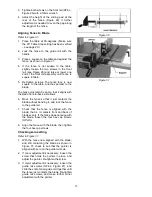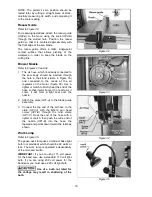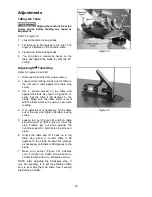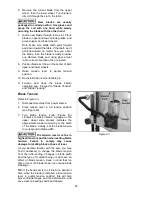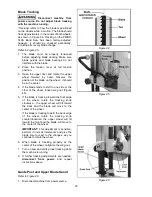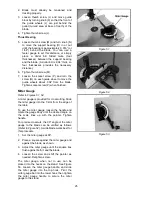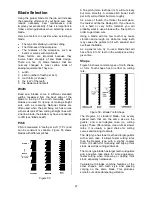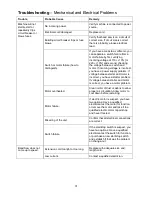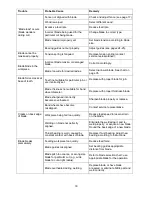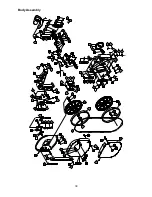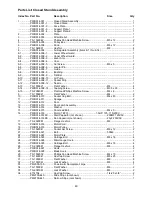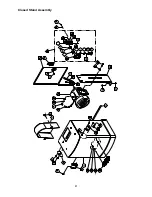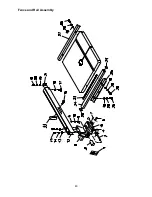
28
Set
The term “set” refers to the way in which the saw
teeth are bent or positioned. Bending the teeth
creates a kerf that is wider than the back of the
blade. This helps the operator more easily pivot
a workpiece through curve cuts, and decreases
friction between blade and workpiece on straight
cuts.
Set patterns are usually selected depending
upon the type of material that needs to be cut.
Three common set patterns are shown in Figure
57.
Figure 57
Generally, the
Raker
set is used for cutting
metal workpieces; the
Wavy
set, when the
thickness of the workpiece changes, such as
cutting hollow tubing or structurals. The
Straight
,
or
Alternate
, set is the one most used for
woodworking blades, and is also used to cut
plastics.
Material
Band saw blades can be made from different
types of metals. The most common include
spring steel, carbon steel, bimetal (alloy steel
equipped with a high speed cobalt steel edge
welded to it), or carbide tips.
Because of the importance of blade selection, it
is recommended that you use the blade
selection guide on page 35. Also, listening to
experienced band saw users will provide
valuable information as to the types of blades
currently on the market along with their pros and
cons.
Blade Breakage
Band saw blades are subject to high stresses
and breakage may sometimes be unavoidable.
However, many factors can be controlled to help
prevent most blade breakage. Here are some
common causes for breakage:
1. Misalignment of the blade guides.
2. Feeding workpiece too quickly.
3. Using a wide blade to cut a tight radius
curve.
4. Excessive
tension.
5. Teeth are dull or improperly set.
6. Upper guides are set too high off the
workpiece.
7. Faulty weld on blade.
Although not essential, some users round or
“stone” the back edge of their blade. This is
done by placing a sharpening stone on the table
and in light contact with the back corners of the
blade as the blade is running. Rounding can
help the back blade edge move more smoothly
through the kerf, smooths the weld, and helps
prevent cracks from starting at the back corners.
Summary of Contents for 1791216K
Page 39: ...39 Body Assembly...
Page 41: ...41 Closed Stand Assembly...
Page 43: ...43 Fence and Rail Assembly...




